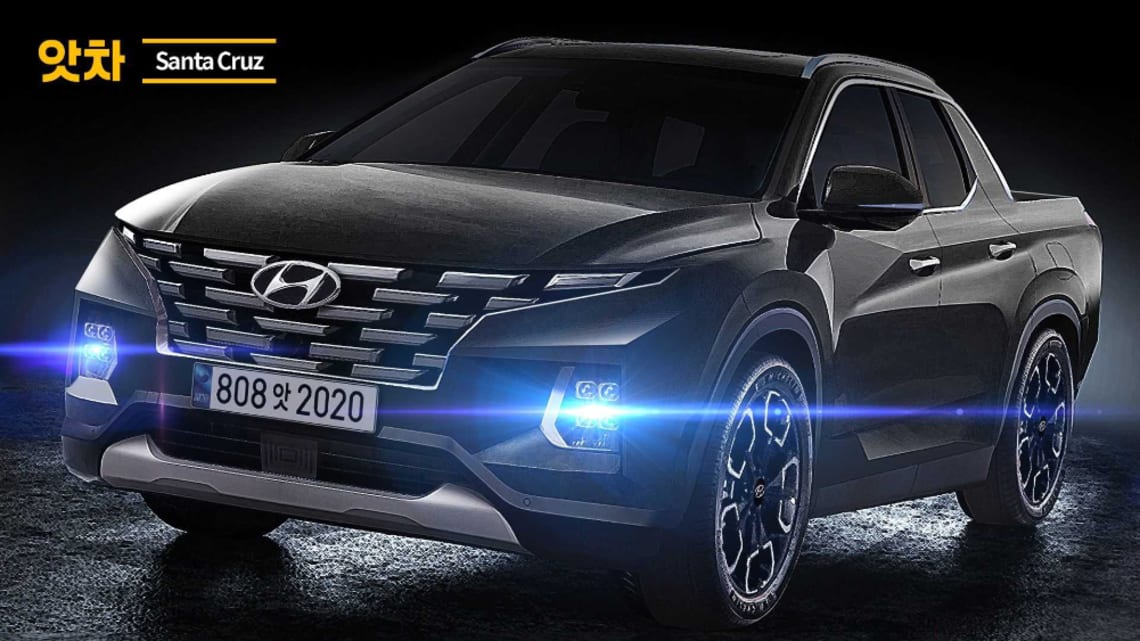Your cart is currently empty!

Why Australia’s case for Hyundai’s Santa Cruz 2021 ute rests on the new Palisade’s success – but is it a modern Subaru Brumby or a softer Toyota HiLux?
The end of a two decade wait may be in sight!
Remember the 1980s Subaru Brumby and 2000s Proton Jumbuck? Though completely unrelated and from different eras, they were a pair of similarly-sized small-car-based utes, offering two seats, four cylinders and a circa-500kg payload.
Despite proving popular with urban and rural buyers alike needing a compact, economical and easy-to-drive workhorse, both ultimately succumbed to old age and poor crash-test performance.
But now a spiritual successor is looming in the form of the somewhat larger Hyundai Santa Cruz. One of the most hotly-anticipated new releases in a long time, it is due to be unveiled next year in the United States as a 2022 model.
Interestingly, it seems Hyundai might even be attempting to gate-crash the booming Toyota HiLux shindig using two distinctly different angles.
On one hand there is the traditional approach, with a still-secret one-tonne truck employing a ladder-frame chassis. Rumoured to hit the streets sometime in 2023, it will take on the established HiLux, Ford Ranger, Mitsubishi Triton, Nissan Navara and Mazda BT-50 as a workhorse with 4×2 and 4×4 capability. Hyundai’s former local boss, JW Lee, told CarsGuide that such a vehicle cannot come to Australia soon enough.

Then there’s the smaller Santa Cruz, which aims to reinvent the ute as a civilised getaway machine, offering monocoque-body construction, advanced suspension and (mainly) four-cylinder engine choices. Reportedly sharing some of its architecture with the Santa Fe and related Palisade SUVs, it is aimed at a more urban demographic.
The thing is, despite the fact that utes of all shapes and sizes have never been more popular, Hyundai is undecided as to whether it will commit to the Santa Cruz for Australia. The Palisade, which is due in November and powered by either a 3.8-litre petrol V6 or a 2.2-litre four-cylinder turbo-diesel engine, might help the brand make up its mind.
As previously reported, the business case for building the American-made Santa Cruz in right-hand drive (RHD) for Australia (as well as the United Kingdom and South Africa) has yet to be determined, meaning there is no guarantee that it will even happen. And the company maintains that the likelihood remains very low.
However, the fact that Hyundai in Australia convinced the head office in South Korea to take a chance on the Palisade – which was also left-hand-drive (LHD) only initially – as a full-sized flagship SUV offering seven or eight-seat configuration has opened the door for the Santa Cruz.
Taking a closer look at the situation, there would be some degree of parts-interchangeability between the two as a result of their shared componentry, cutting costs in the switch to RHD.

Additionally, with the Palisade expected to break new ground for Hyundai by being priced well north of $70,000 in some grades, it should give the brand confidence that Australians are prepared to pay a premium for innovative models like the Santa Cruz too – which should outperform the current crop of truck-based pick-ups with its anticipated car-like driveability, refinement, comfort and safety.
Speaking to CarsGuide a few weeks ago, Hyundai’s local chief operating officer, John Kett, revealed that if the Palisade proves profitable, it will give the Australian outfit greater clout when vying for future models in development that are currently LHD-only, such as the Santa Cruz and HiLux rival.
“If we can make (Palisade) work, then it gives us a lot more confidence around other product programs that we are in the pitching for that we haven’t revealed,” he said.
“If it does do a little bit better than what we planned for, then it’s going to underwrite the probability and cashflow for other new product programs that we bring into the business.”
Hyundai has made no bones about wanting to expand its portfolio into the ute segment, though a truck-based HiLux and Ranger rival rather than a reborn Brumby is by far the more preferred option for Australia.

Should the RHD Santa Cruz get the go-ahead, it wouldn’t be available before late 2022 or even 2023 at the earliest, given the extended gestation period of the LHD version. The concept of the same name debuted more than five years ago at the 2015 Detroit auto show, and was originally scheduled to appear as a 2018 or 2019 model.
What will power the Santa Cruz also remains clouded, but some reports suggest a choice of four-cylinder petrol units in 2.0-litre turbo or 2.4-litre naturally aspirated engines are the most likely candidates, while the Santa Fe/Palisade’s 2.2-litre turbo-diesel and larger V6 petrols have also been mooted.
Will Hyundai bite the bullet and bring the Santa Cruz to Australia? Stay tuned…
by
Tags:
